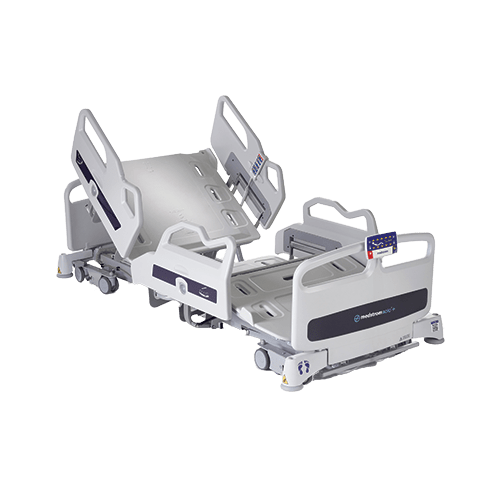‘Every Contact Counts’ – Tissue Viability Best Practice Webinar
A focus on the best practice for pressure area care and the importance of why every contact counts were at the fore during this Medstrom webinar. Read the summaries and watch the recordings below from our guest speakers as they talk us through their wealth of knowledge and experience in this area and answer some questions about how to care for patients experiencing pressure damage.
How can interface pressures be used appropriately?
“When we’re using this measurement [interface pressures], we need to think clearly about why we are using it and what relevance is it to our patients.”
In her extremely informative talk, Jacqui Fletcher OBE initially outlines the origins of interface pressure usage and explains why the basic assumption surrounding interface pressure features some flaws.
Jacqui went on to elaborate upon the reasons why measurements are done at all – namely to compare equipment and identify how alterations in the name of pressure alleviation can be made – and why the simple element of ‘pressure’ is only one piece of the story. There are many factors at play when considering the effect interface pressure can be having on a patient, and thus treatment cannot be administered via a ‘one-size-fits-all’ mentality.
Finally, Jacqui combed through the process by which interface pressure measurement studies are undertaken, clarifying what variables a practitioner must be aware of when taking readings. She provided insightful tips and explanations about the practise of measurements, all the while backed up consistently by studies and clinical results.
Focusing on complex patients and a business case approach to equipment requirements
“People start to sit up and take notice when you’re showing how you can reduce to risk to patients and the development of pressure ulcers”
Our second talk came from Julie Tyrer, Tissue Viability Nurse Consultant at the Liverpool Heart and Chest NHS Foundation Trust, who began her session with a nod towards the effect COVID-19 had, not only on the average patient and their presence of comorbidities, but also on the prevalence of pressure ulcers.
Julie’s addressed the use of Fluid Immersion Simulation (FIS) surfaces as treatment, alleviation and also prevention of pressure damage at Liverpool Heart and Chest. The emphasis on the potential to prevent pressure damage is something Julie clearly states, bringing up extracts from her business case demonstrating how “getting in front of the problem” can actually provide financial cost-savings as well as improved patient outcomes.
Julie finished her presentation on a summary of how and why FIS surfaces can be used in the prevention of pressure damage, and provided a guide on how certain tools such as a the NHS productivity calculator can aid clinicians in best treating pressure damage. She also encouraged others to compile their own business cases and detailed what elements make for an effective one.
Pressure Ulcer Patient Story
Paul Winterford sat down with us to give us a personal insight into what experiencing pressure damage is like, and just how drastic the human cost can be. As a sufferer of Spina Bifida, Paul is more vulnerable to pressure damage due to the reduced feeling experienced in the back of his legs, meaning whilst he can sense pressure, he can’t sense pain.
Despite having experience with pressure ulcers, it was during lockdown that a particularly menacing pressure ulcer developed. Paul eventually entered ICU with a Category III pressure ulcer that persevered and refused to heal. He was eventually put on a Dolphin Therapy mattress to aid his treatment and recovery.
Paul explains the wide-ranging and insidious impact extreme pressure damage can have on a patient’s life – from an inability to establish a normal routine, to increased isolation from a social life, to the financial impact as the patient must invest in resources to aid in pain management and treatment.
To ensure ‘every contact counts’, view more of Medstrom’s past webinar series including tissue viability and pressure ulcer themes.
Alternatively, discover more about how Dolphin Therapy can support effective pressure ulcer prevention and treatment.







